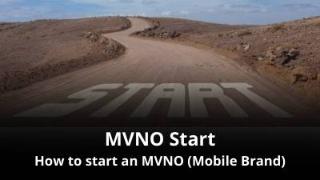How to create a Business Plan for your Mobile Brand (MVNO)
It is important to create a Business Plan for your Mobile Brand (MVNO), this will be part of your success. In the rapidly evolving telecommunications landscape Mobile Virtual Network Operators (MVNOs) have emerged as a critical player in providing cost-effective and innovative mobile services to consumers. However, you will be competing in this dynamic market. Therefore, you need to have a solid business plan that outlines your MVNO’s strategic direction, operational framework, and financial projections.
This MVNO Business Plan meticulously examines your MVNO’s business objectives, target market, competitive landscape, service offerings, revenue streams, cost structure, and growth strategies. Indeed it delves into the intricacies of market analysis, financial modeling, operational planning, and strategic decision-making, providing a roadmap for the MVNO’s success.
Obviously by effectively navigating the complexities of the telecommunications industry, you can translate your business plan into tangible results, attracting and retaining customers, expanding market share, and achieving sustainable profitability. In any case the MVNO Business Plan serves as a valuable tool for guiding your MVNO’s journey towards achieving your ambitious goals.
As has been noted in “How to start an MVNO” there are at least 3 plans which are important to create, these are:
Here we give some guidance about what might be useful to put in your business plan.
Like for any business, MVNOs require a solid business plan. In any case you’ll want to consider things like where to offer, to whom, competitors, how many subscribers you expect to attract, etc. Therefore, your Business plan should address the following questions:
- Where do you want to offer your services?
- Who is your target market and audience?
- How many competitors do you have?
- What gap in the market are you addressing and how will your mobile service differ from others?
- How will you price your plans/bundles?
- Do you plan on offering prepaid plans, postpaid plans, or both?
- Do you plan on bundling products?
- What is the number of your potential subscribers?
- How much flexibility do you need for your MVNO?
- 100 Points you might want to think about
- Frequently Asked Questions (FAQs)
Where do you want to offer your services?
Good and straight forward starting point. If you want to offer mobile services in just one country, or even a city like Chicago or Bogotá. You’ll need to identify a host network (MNO) that operates in that area. In addition when you want to sell your services in a specific region, such as the European Union, you might need to partner with multiple providers to guarantee high quality services.
In brief identifying which country/countries or region(s) you want to serve is an obvious but necessary step when planning your MVNO.

What is your target market and who is your audience?

Always ask yourself the following. Who is your target market, and what are their needs and preferences? What type of services do you plan to offer to your customers? Will you offer traditional Voice, SMS and Data services, or will you focus on specialized services such as mobile banking or e-commerce?
Some MVNOs begin with the assumption that Mobile Network Operators (MNOs) don’t appeal (enough) to all audiences. Perhaps their branding lacks character, their data plans are too rigid, or they simply lack exciting incentives.
First thing you should do is focus on audience segmentation. Subsequently come up with ideal customer profiles by identifying specific communities, niche markets, socio-economic groups, or existing customer bases that you think can be successfully lured away from major carriers. See the MVNO Business model section for some examples.
How many competitors do you have?
Another obvious one — identify your competitors. These days mobile service providers are more abundant than ever. Not only will you be competing with national Mobile Operators like AT&T, Vodafone, MTN and Orange, you’ll also be competing with other MVNOs.
Without a doubt, MVNOs are beginning to address increasingly niche markets, meaning there will likely be a lot of overlap in terms of customer profiles. Therefore, it is important that you investigate how much competition there is.
What gap in the market are you addressing in your Business Plan and how will your mobile service differ from others?
Once you’ve defined your audience, you will need to persuade them to sign up for your service instead of trusted, big-name carriers. But that’s not an easy task, so it’s important to identify what specific needs your MVNO addresses and how it will differ from other offerings.
For instance, you can offer more flexible data plans to accommodate low-income subscribers. Alternatively, if you’re targeting a specific niche, such as sports fans, you can invest in co-branding and team partnerships. Here you can find some (niche) markets examples.

How will you price your plans/bundles?
Following this previous point, one of the easiest ways for you to differentiate your MVNO from MNOs is to offer more appealing pricing. While this could mean giving low-income or low-consumption consumers the ability to set bespoke monthly plans.
Furthermore could also be something a little more innovative, like facilitating payments via blockchain or the ability to tokenize and exchange mobile data. So, you should figure out how you want to price your plans, what they’ll include (voice, data, SMS), etc.
On the whole it is important to know that most MVNOs will not be able to compete and survive by only offering a lower price, since the MNOs most of the time will win on price.
This is as well depending on your Wholesale agreement.
Do you plan on offering prepaid plans, postpaid plans, or both?
What is Prepaid
Prepaid means that your subscribers purchase phone credit in advance. They can use this phone credit to call, text and, if applicable, use data services. Afterwards when they have spend the credit they need to purchase new Prepaid credit..
What is Postpaid
Postpaid means that your subscribers sign a contract for a certain period (e.g. 12 months). Hence Postpaid subscribers normally get better bundles. Lastly Postpaid plans are plans with a recurring monthly cycle, and a monthly bill to match.
In brief Prepaid phone plans customers pay upfront, whereas on Postpaid plans they pay their bills at the end of the month. There are pros and cons for both.
For instance, while prepaid plans are less expensive for you as an MVNO and don’t require credit checks. However postpaid plans tend to include more additional services, such as entertainment or travel features. Subsequently these services/options also carry different implications for how much data you require, your rating and billing practices, etc.
Moreover, from financial point of view Postpaid subscribers will give you a guaranteed revenue for the next month(s) and you can also use this to do some forecasting. Of course when you do this remember to include your churn.
Do you plan on bundling products?
Bundling is another way for you to differentiate your MVNO. For instance, you can add Broadband services to your offer. You can also offer non-telco services to “sweeten the deal” and differentiate your product such as streaming subscriptions such as Netflix, Amazon Prime, Disney, etc. Or combine your mobile offering with any other products your company already might offer. As a result bundling products gives a bigger lock-in and subscribers tend to stay longer.






What is the number of your potential subscribers?
Based on the combination of the above results you should be able to get an indication of the potential number of subscribers which might become your customer.
Of course do NOT overestimate your potential number of subscribers, it is always better to stay on the cautious side.
Equally important to know it the (minimum) amount of subscribers you need to have according to your financial plan?

How much flexibility do you need for your Mobile Brand / MVNO?
Finally, once you have an idea of what your offering will look like, who your customers will be, and what will differentiate your product, you will need to figure out what is required to make it all work. This means you’ll need to figure out how much control over your products, services, and internal systems is necessary.
Now it becomes a bit more complicated since are several types like: Skinny MVNO, Thin/Light MVNO, Thick MVNO, Full MVNO.
However there is no hard split between the different types. This is also depending on what your vendor can offer.
Without reservation a basic principle is that the more flexibility you want to have the higher your costs will be. Folllowing this it means that you can spend less money on marketing and other items which you might need. Therefore (depending on your business case) it might make sense to start with a Thin/Light setup. See also how to select a vendor/supplier.
100 Points you might want to think about for your Mobile Brand Business Plan
Consequently developing a comprehensive business plan for your Mobile Virtual Network Operator (MVNO) or mobile brand is crucial for strategic planning and successful implementation. This comprehensive checklist covers various aspects essential for building a robust business plan for your MVNO or mobile brand. Customize and adapt these points to suit the specific goals, context, and market dynamics of your venture.
Here are 100 points to consider for your Business Plan for your Mobile Brand (MVNO).
Executive Summary and Introduction
- Business name and description.
- Vision and mission statements.
- Brief overview of the mobile telecommunications industry.
- Summary of your unique value proposition.
Products and Services
- Special features or unique offerings.
- Overview of mobile services (voice, data, SMS).
- Bundled services and packages.
- Device offerings and partnerships with device manufacturers.
Customer Segmentation and Targeting
- Definition of customer segments.
- Ideal customer profiles.
- Tailored marketing strategies for each segment.
- Customer acquisition and retention plans.
Operational Plan
- Technology and infrastructure requirements.
- Overview of day-to-day operations.
- Staffing requirements and organizational structure.
- Customer support and service delivery.
Market Analysis
- Target market demographics & segmentation.
- Analysis of market trends and opportunities.
- Competitive analysis of existing MVNOs.
- SWOT analysis.
- Regulatory environment & compliance.
Marketing and Branding
- Brand positioning and messaging.
- Marketing (online, offline, social media).
- Customer acquisition strategy.
- Branding guidelines and visual identity.
- Promotional activities and campaigns.
Distribution Strategy
- Retail partnerships and distribution channels.
- Online distribution platforms.
- SIM card distribution and activation processes.
- Logistics and inventory management.
Financial Projections
- Revenue projections and growth forecasts.
- Break-even analysis.
- Cash flow projections.
- Cost structures (fixed and variable costs).
- Budget allocation for marketing & operations.
Business Model
- Description of your MVNO business model.
- Revenue streams and pricing strategy.
- Distribution channels for acquiring customers.
- Partnerships and collaborations with MNOs or MVNE or MVNAs.
Technical Infrastructure
- Network architecture and technology stack.
- Integration with MNOs, MVNE or MVNAs.
- Security measures for user data.
- Scalability considerations for future growth.
- Mobile app development and features.
Risk Analysis and Mitigation
- Identification of potential risks.
- Risk mitigation strategies.
- Contingency plans for unforeseen challenges.
- Regulatory compliance risks and solutions.
Customer Experience
- User journey and experience design.
- Onboarding processes for new customers.
- Customer feedback mechanisms.
- Quality of service commitments.
More points to consider for your Business Plan for your Mobile Brand (MVNO).
Partnerships and Collaborations
- Agreements with MNOs, MVNE or MVNAs.
- Device manufacturer partnerships.
- Collaborations with 3rd service providers.
- Value-added partnerships for customer benefits.
Legal Framework
- Intellectual property considerations.
- Contractual agreements with suppliers and partners.
- Dispute resolution mechanisms.
- Legal support and compliance teams.
Scaling and Growth Strategy
- Plans for scaling operations.
- Market expansion strategies.
- Entry into new geographic regions.
- Potential diversification of services.
Training and Development
- Employee training programs.
- Continuous learning initiatives.
- Skill development for evolving industry trends.
Regulatory and Legal Compliance
- Compliance with telecommunications regulations.
- Licensing requirements.
- Data protection and privacy policies.
- Contracts and agreements with partners.
Exit Strategy
- Potential exit strategies (for example: acquisition, merger, IPO, etc.).
- Criteria for evaluating exit opportunities.
- Contingency plans for unexpected exit scenarios.
Monitoring and Analytics
- Key performance indicators (KPIs).
- Analytics tools for monitoring user behavior.
- Data-driven decision-making processes.
- Reporting mechanisms for performance evaluation.
Brand Perception and Reputation
- Online reputation management strategies.
- Crisis communication plans.
- Customer trust-building initiatives.
- Brand monitoring tools and techniques.
Customer Retention
- Loyalty programs and incentives.
- Retention strategies for long-term customer relationships.
- Customer feedback and satisfaction surveys.
- CRM system(s).
Innovation and Technology Trends
- Adoption of emerging tech (5G, IoT, etc.).
- Innovation pipelines and R&D initiatives.
- Monitoring & adapting to technological trends.
- Futureproofing against industry advancements.
- Commitment to industry best practices.
Competition and Positioning
- Unique selling propositions (USPs).
- Strategies for differentiating from competitors.
- Positioning in the market landscape.
- Response plans to market changes or disruptions.
Environmental and Social Responsibility
- Sustainability initiatives.
- Social responsibility programs.
- Eco-friendly practices in operations.
- Contribution to local communities.
Frequently Asked Questions (FAQs)
What should I include in a mobile brand (MVNO) business plan?
A solid MVNO business plan should cover target market definition, competitive analysis, pricing strategy, service offerings, revenue streams, and operational plans. It should also outline goals, financial projections, and how you will differentiate your mobile brand in the market. A clear roadmap helps secure partners and investors and guides your launch strategy.
How do I identify my target market when planning an MVNO business?
Start by researching customer segments that are underserved or have unmet needs, such as niche communities or specific demographics. Define ideal customer profiles based on usage patterns, price sensitivity, and value expectations. This helps shape your service offerings and marketing approach.
Why is competitive analysis important in an MVNO business plan?
Competitive analysis helps you understand existing players, pricing models, and market gaps. Knowing competitor strengths and weaknesses allows you to position your MVNO effectively, tailor pricing, and develop unique value propositions to attract subscribers.
How do I estimate potential subscribers for my MVNO?
Estimate potential subscribers by analyzing market size, target customer segments, and competitive penetration rates. Consider realistic adoption rates and industry benchmarks to avoid overestimation. This figure feeds into financial projections and helps assess feasibility.
What financial projections should be included in an MVNO business plan?
Include revenue forecasts, break‑even analysis, cash flow projections, and costs for operations, marketing, and technology. Plan different scenarios based on subscriber growth and pricing structures to understand risks and when profitability might be achieved.
How do I outline pricing and service bundles in my MVNO business plan?
Detail how you will price voice, data, and other service bundles based on target market needs and competitor pricing. Explain whether you will offer prepaid, postpaid, or hybrid plans and any unique bundles like family packages or niche add‑ons.








